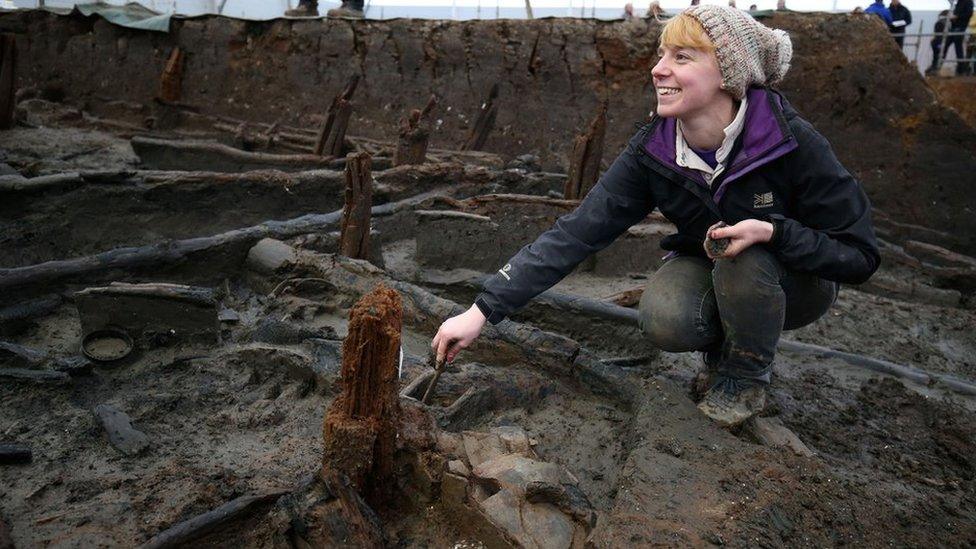Must Farm: Replicas of 'Britain's Pompeii' finds created
- Published
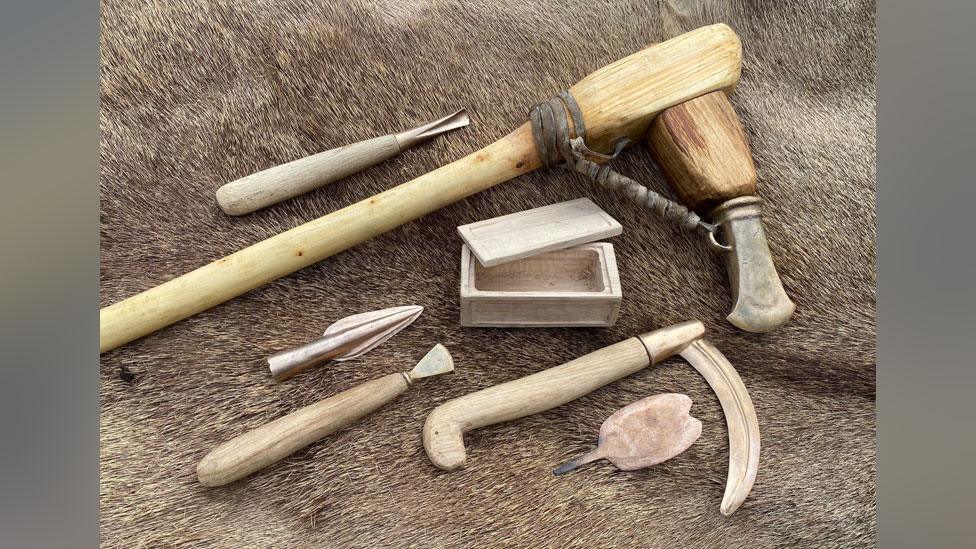
Experimental archaeologists have made replicas of seven ancient tools found at Must Farm so far and will make nine in all
Replicas of Bronze Age artefacts discovered at a site dubbed "Britain's Pompeii" have been created by experimental archaeologists.
The finds were unearthed at a burnt-out 3,000-year-old village at Must Farm quarry in Cambridgeshire.
A sickle, a razor and a two-part axe are among the objects recreated in the Cambridge University-funded project.
Their co-creator James Dilley said many were "not too distant to our modern woodworking tools today".
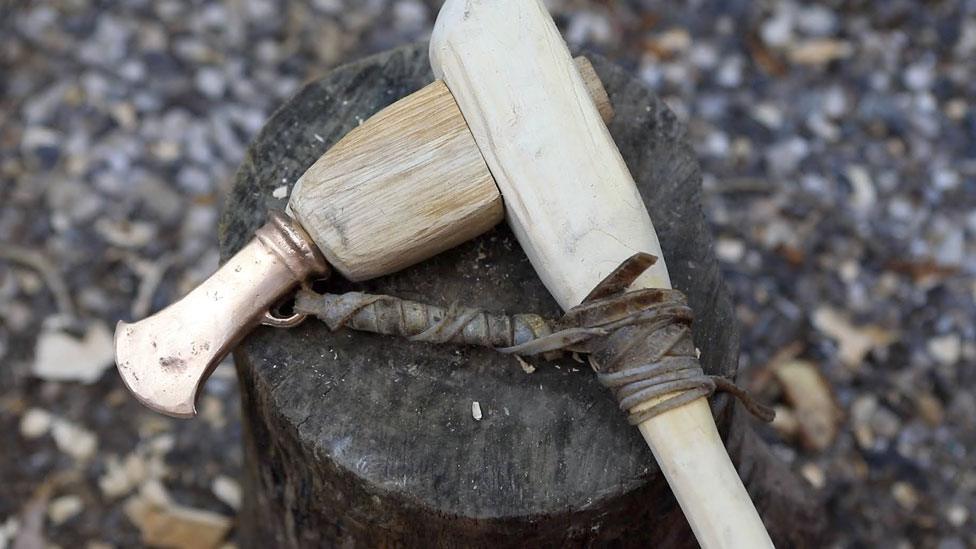
One of the replicas is this two-piece hafted axe...
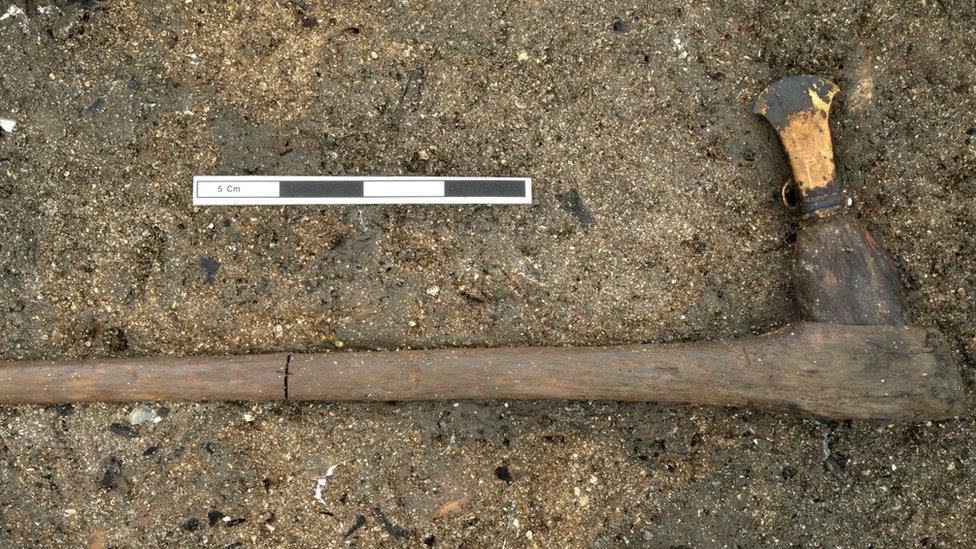
... which is based on this original item found at Must Farm
The village, which was discovered by Cambridge Archaeological Unit (CAU) between 2015 and 2016, was preserved along with its contents because it fell into river silt.
CAU commissioned Dr Dilley and Emma Jones, from AncientCraft, to recreate nine of the objects found at the site.
Dr Dilley said thanks to Must Farm "we've got a much, much better picture of what the tools looked like in the Bronze Age as full, complete units - and they're not too distant to our modern woodworking tools today".
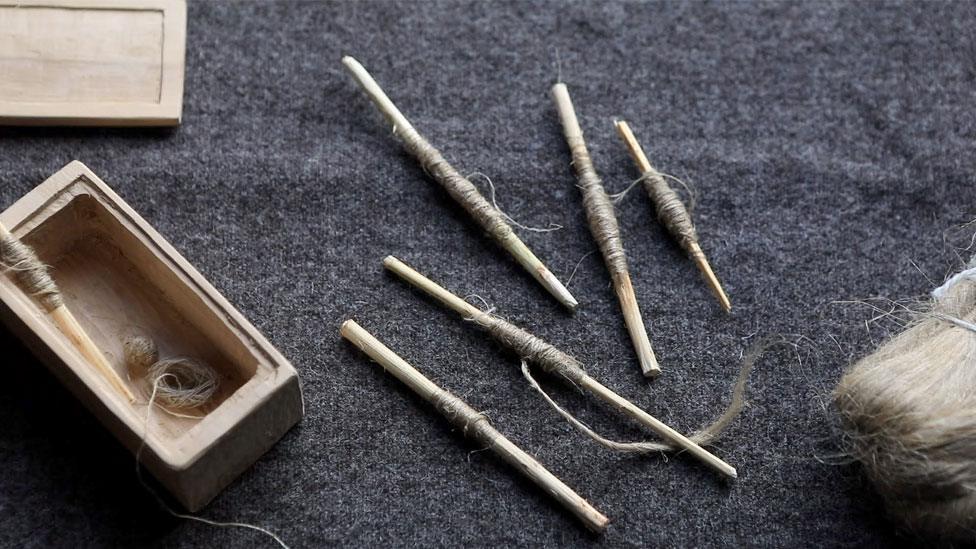
The wooden items were preserved after the village collapsed into river silt following a fire
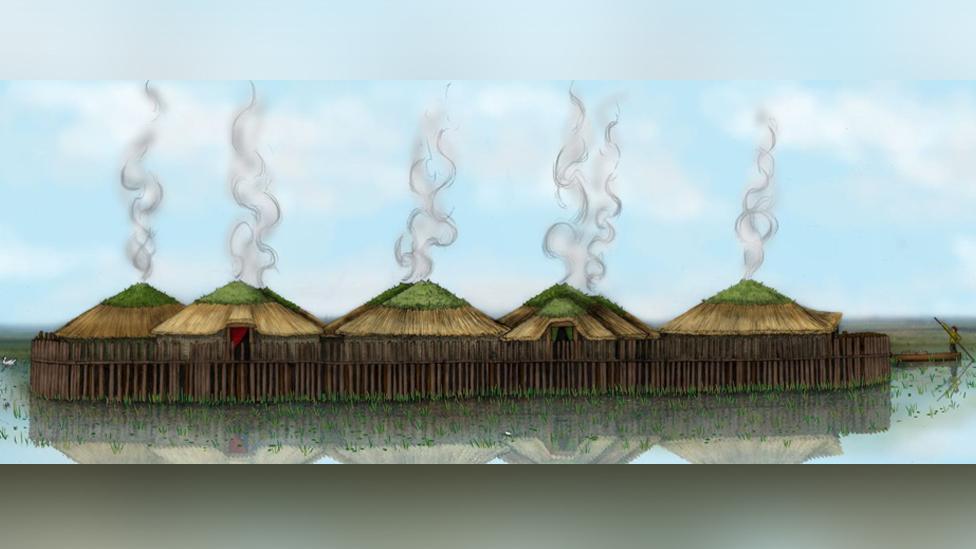
Archaeologists were astonished by the "fabulous artefacts" found at the site
He compared the Bronze Age to a "1,000 piece jigsaw puzzle".
"We know it's a colourful, vibrant period with culture, food, clothing, but over the 3,000 years, 995 pieces will rot or disappear into the ground, so you're left with a few bits of stone or traces in the ground," he said.
"But with Must Farm, because it was preserved in the Fen, you perhaps get a couple of hundred extra pieces."
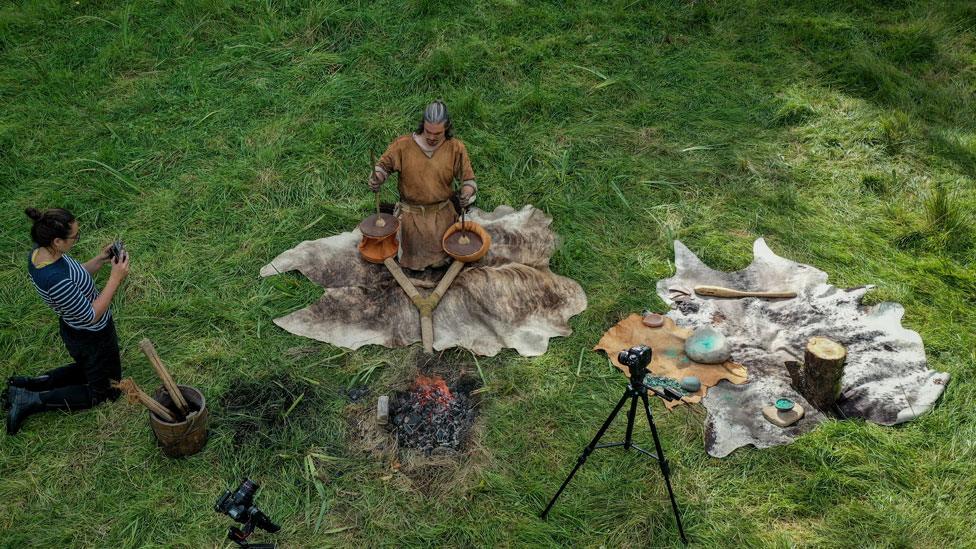
Emma Jones operating a drone to create a film of James Dilley casting metal
Miss Jones said they largely worked from photographs, illustrations and detailed measurements collected by CAU archaeologists.
"This helped us to create as accurate reproductions as physically possible without having the actual thing in front of us," she said.
CAU archaeologist Chris Wakefield said the replicas were commissioned so they could be taken into schools to teach children about the Bronze Age.
The project was funded by the Cambridge University Arts and Humanities Impact Fund.

The replicas will be taken into schools to show children how Bronze Age people lived and worked

Find BBC News: East of England on Facebook, external, Instagram, external and Twitter, external. If you have a story suggestion email eastofenglandnews@bbc.co.uk, external
Related topics
- Published26 July 2022

- Published24 March 2021

- Published16 August 2019

- Published19 February 2016
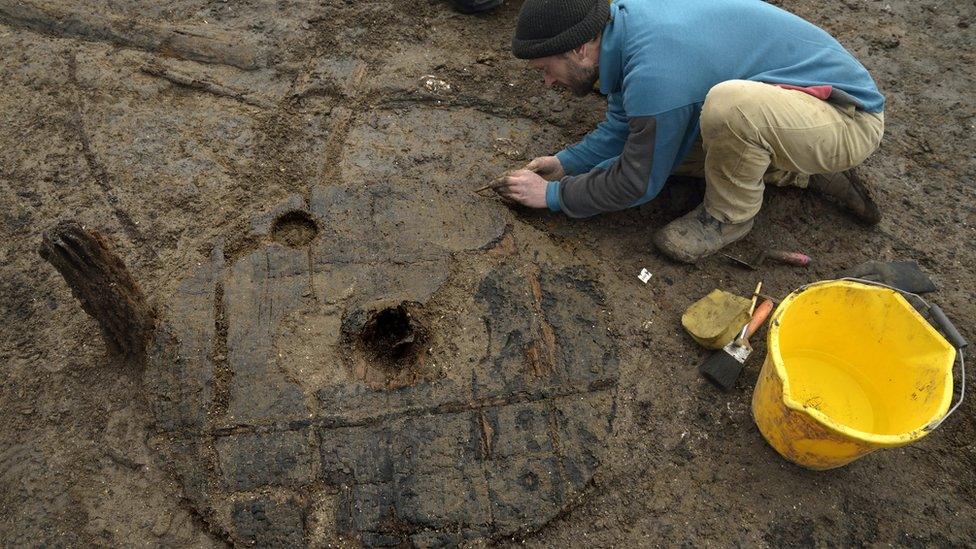
- Published6 February 2016
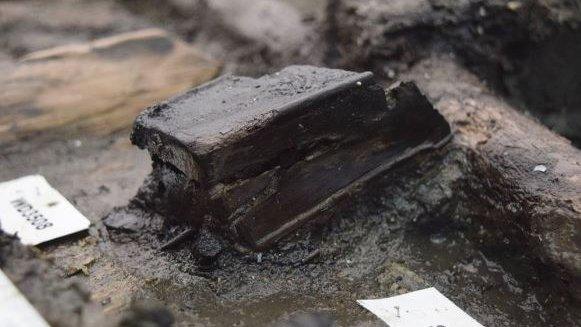
- Published12 January 2016
